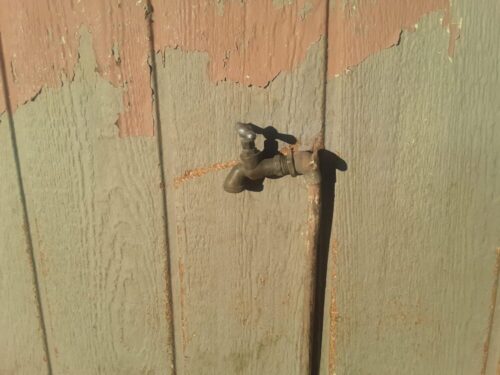
During the last blog post, I discussed some indoor long-term water solutions for saving money through water bills, and saving water (and the environment) for future generations. In this post, I will discuss outdoor water-saving solutions. Why is saving water so important? Because there are more of us and less ready-to-use water. A few years ago, I was able to meet my water needs through rainwater harvesting. No longer. Increasing drought and heat have conspired to make this impossible. Phoenix and I now have to buy and haul water from a nearby well (at roughly $25 per 1000 gallons). This situation is only going to worsen with population growth and climate change.
So what can we do?
As I mentioned in the last post, many social dictates can nonsensically waste water. If you don’t need your car to look brand new all the time, wash it less often. If you have to wash your car (e.g. because of road salts), go to a car wash that recycles their water. Washing your car in the driveway can use as much as 100 gallons of fresh water, whereas a car wash will use up to 80 gallons of recycled water.
If legal in your state/county/HOA, install rain barrels at your downspouts. You can pick up barrels used to haul olive oil and other edible liquids for a reasonable price at your local hardware or feed store. A 1000 square foot roof can collect 420 gallons out of 1 inch of rain, which you can then use to water your garden and trees.
The above methods of recycling water use less of it and help decrease high-pollutant runoff as well as your own water costs.
Make sure your hoses don’t leak when watering your lawn, or better yet don’t have a lawn. The average household uses 50% of its water to keep the lawn green. If like us you live in a desert climate, switch to xeriscaping using drought tolerant plants. You’ll save money on water and chemicals (fertilizers, herbicides, pesticides), and save time spent on maintenance. Even if you live in an area that gets lots of rain, that water and space could be better used growing native wildflowers that don’t require as much water. You’ll have a beautiful yard and provide habitat for pollinators while doing less watering and maintenance, another example of less is more. Several states have recently implemented water conservation regulations along these lines, addressing the need to reduce runoff from irrigation.
The more water you save, the more future generations will have. Plus you save money on your monthly bill, which adds up over time. What motivates you to save water, and what actions will you take in your own household?
Next Blog Post: Part 3: Challenges we faced when conserving water (by Phoenix)

Some great ideas here!